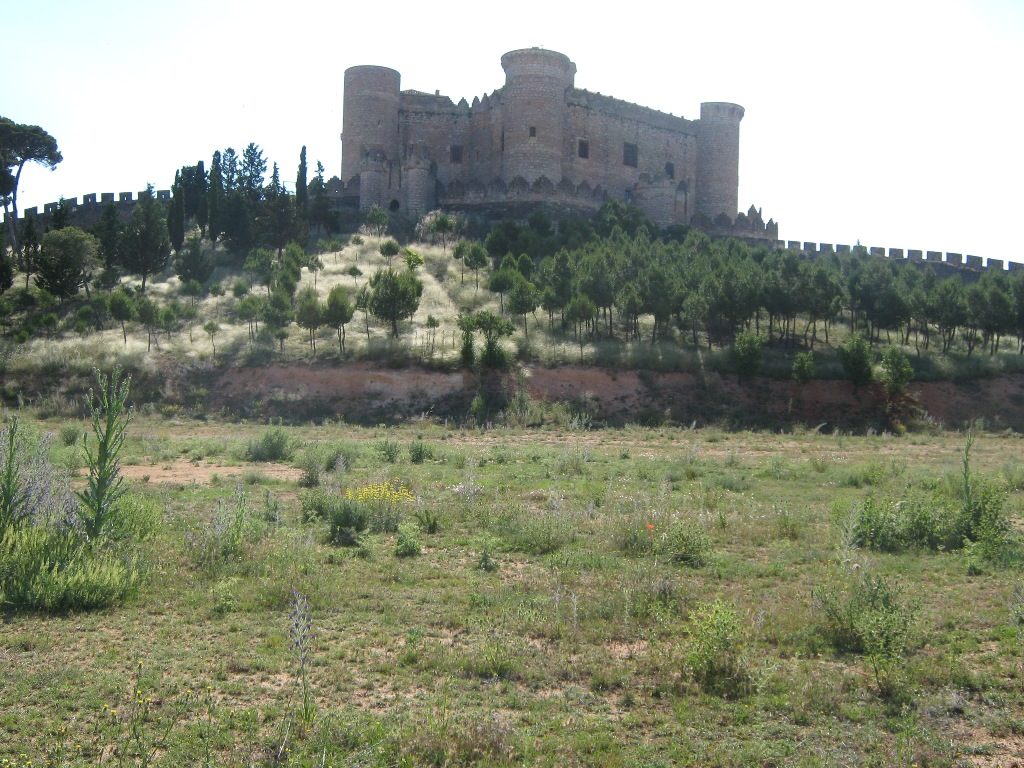At the beginning of the film we are told that this is Western Europe 1501, and indeed it could not be more westerly, as the whole film by Dutch director Paul Verhoeven was shot in Spain.
The opening scene shows a siege, and the familiar walls of Ávila are easily recognisable as the mercenary troops imbibe religion and alcohol in preparation for the assault on the city gate called the Puerta del Carmen.
Once inside the castle they transfer to the long and winding stone streets of Cáceres in Extremadura.
Betrayed by the Lord, who is technically in breach of contract, and who turns the cannons on his victorious troops, the mercenaries are disarmed and retire to the abandoned village of El Merino near the town of El Fresno in Ávila province, which is where they recover after their expulsion, and where they discover the buried statue of Saint Martin, while a camp follower gives birth to a still-born child.
After attacking a wagon train, in good old western European style, they kidnap the, as it turns out, rather slutty heroine, and then take up residence in the castle of Belmonte.
The rest of the film takes place there, including the interiors.
Tattooed mercenaries, plague, revenge, costumes straight out of Sergeant Pepper and a complicated love-hate triangle; it could almost be a contemporary film instead of one set in medieval times.
Local people are still a bit angry with Verhoeven, who, in his quest for authenticity, actually set fire to the keep.
The castle was built in 1546 by Don Juan Pacheco(Marqués de Villena) and stands on a hilltop known as Cerro de San Cristóbal. It currently belongs to relatives of the Duchess of Alba.
Orders were given to begin construction of the castle in the XV century, with building works lasting 18 years directed by architect Hanequín of Brussels and continued by Juan Guás.
In 1488 the castle received some illustrious guests, the Catholic Monarchs, Fernando and Isabel, who stayed there on August 12th.
The castle of Belmonte has had its violent moments, even when film makers were not shedding blood all around it.
The XIV Duque de Peñaranda, Conde de Montijo, Hernando Alfonso Fitz-James Stuart y Falcó, who was the castle’s owner at the time, was on the wrong side of the lines when the Spanish Civil War broke out in 1936, and was executed at Paracuellos del Jarama on the 8th of November in the same year.
The name Fitz Stuart dates back to the War of Spanish Succession in the early 18thcentury, when the leader of the Bourbon troops, supporting Felipe of Anjou’s claim to the throne was James Fitz – James Stuart, Duke of Berwick,
The Republican militias used the castle as a prison and barracks while they controlled the area.
Before them, Napoleon’s army had also used the castle for similar purposes.
One of Spain’s guerillas, known locally as ‘Uncle Camuñas’, was shot against the castle walls.
The International Medieval Combat Federation and Belmonte Castle host International Championships in Spain, promoting reenactments of medieval battles and combats as a way of attracting more tourists.
